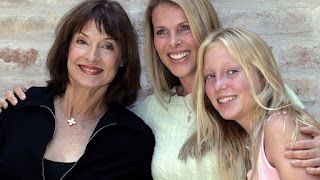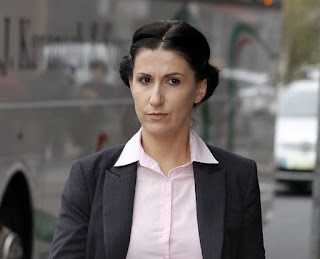Members from the Facebook group Guelph Stands Against Scientology protested outside church offices on Baker Street Saturday
Troy Bridgeman
GuelphToday
October 29, 2017
A small but enthusiastic group of protestors replete with a healthy supply of Guy Fawkes masks and signs gathered outside the new Canadian headquarters of the Church of Scientology Saturday afternoon.
“The purpose of the protest is that we don’t believe it is a religion,” said organizer Frank Malott. “We don’t believe it is a cult. We believe it is a business. We don’t like the way children are being treated. We don’t like the way the Sea Orgs are being treated. We just believe that it is not a religion.”
Malott helped establish the Guelph Stands Against Scientology Facebook group and was one of nearly 30 people that braved the cold and rain Saturday to voice their opposition to the church setting up in Guelph.
“There are 760 in our group right now on the Facebook page,” said Malott. “It was three of us that started the group. One day we realized that Guelph was bringing in the Scientology office and a bunch of us thought, let’s start a group and see what happens.”
Malott and most of the other protestors wore masks or other disguises and carried signs.
“I am just protecting myself from Scientology,” said Malott.
Repeated efforts to talk with people inside the building at 40 Baker St were unanswered and no one from the church’s nearest office in Cambridge has responded to a request for an interview.
In an earlier GuelphToday story, Church of Scientology’s Canadian president Yvette Shank said the building will be used as an administrative building for the Church of Scientology.
“This is the Continental Liaison Office, responsible for the coordination of Church activities across Canada,” said Shank.
Malott said his group has tried to contact Shank to arrange a meeting and get more information about their plans for the Guelph office.
“We don’t know how to contact them,” he said. “They won’t answer our emails. We’ve had people write and send emails.”
One man who was there with his granddaughter said he was a member of Scientology in the 1970s but became disillusioned with the organization and left. He said he had no problems with the church after he left but declined to speak on the record about his experience.
All but one of the protestors refused to speak on the record.
Barbara Mathews said she was there to protest all cult activity in the city.
“I am concerned about their power and control over the vulnerable,” said Mathews. “That is basically my premise and we don’t need a group like this in Guelph."
Malott said that they plan to continue protesting the church’s activities in Guelph.
“We are here to educate the city of Guelph,” he said. “This won’t be the last protest."
"We haven’t really started on the second protest yet, but once this one is over and done with we will move forward to the next protest.”
https://www.guelphtoday.com/local-news/masked-protesters-gather-outside-new-scientology-office-in-downtown-guelph-751949
Troy Bridgeman
GuelphToday
October 29, 2017
A small but enthusiastic group of protestors replete with a healthy supply of Guy Fawkes masks and signs gathered outside the new Canadian headquarters of the Church of Scientology Saturday afternoon.
“The purpose of the protest is that we don’t believe it is a religion,” said organizer Frank Malott. “We don’t believe it is a cult. We believe it is a business. We don’t like the way children are being treated. We don’t like the way the Sea Orgs are being treated. We just believe that it is not a religion.”
Malott helped establish the Guelph Stands Against Scientology Facebook group and was one of nearly 30 people that braved the cold and rain Saturday to voice their opposition to the church setting up in Guelph.
“There are 760 in our group right now on the Facebook page,” said Malott. “It was three of us that started the group. One day we realized that Guelph was bringing in the Scientology office and a bunch of us thought, let’s start a group and see what happens.”
Malott and most of the other protestors wore masks or other disguises and carried signs.
“I am just protecting myself from Scientology,” said Malott.
Repeated efforts to talk with people inside the building at 40 Baker St were unanswered and no one from the church’s nearest office in Cambridge has responded to a request for an interview.
In an earlier GuelphToday story, Church of Scientology’s Canadian president Yvette Shank said the building will be used as an administrative building for the Church of Scientology.
“This is the Continental Liaison Office, responsible for the coordination of Church activities across Canada,” said Shank.
Malott said his group has tried to contact Shank to arrange a meeting and get more information about their plans for the Guelph office.
“We don’t know how to contact them,” he said. “They won’t answer our emails. We’ve had people write and send emails.”
One man who was there with his granddaughter said he was a member of Scientology in the 1970s but became disillusioned with the organization and left. He said he had no problems with the church after he left but declined to speak on the record about his experience.
All but one of the protestors refused to speak on the record.
Barbara Mathews said she was there to protest all cult activity in the city.
“I am concerned about their power and control over the vulnerable,” said Mathews. “That is basically my premise and we don’t need a group like this in Guelph."
Malott said that they plan to continue protesting the church’s activities in Guelph.
“We are here to educate the city of Guelph,” he said. “This won’t be the last protest."
"We haven’t really started on the second protest yet, but once this one is over and done with we will move forward to the next protest.”
https://www.guelphtoday.com/local-news/masked-protesters-gather-outside-new-scientology-office-in-downtown-guelph-751949





